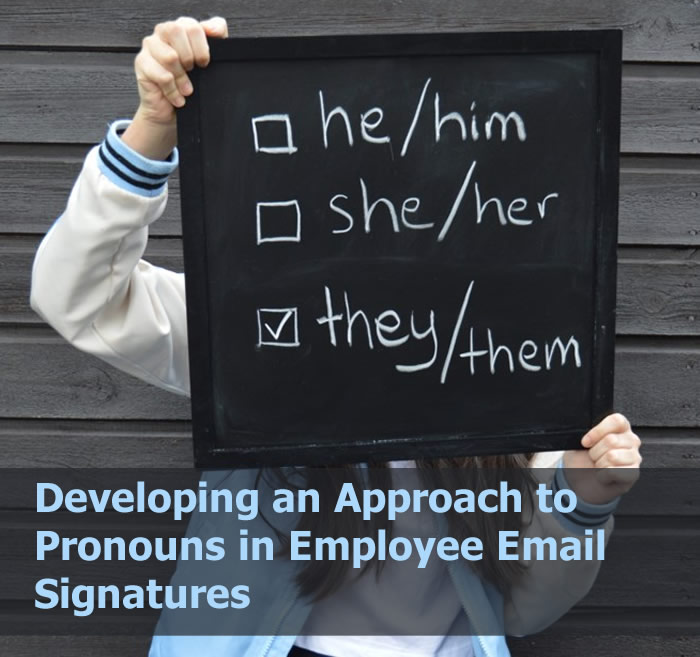
The human resource function of an organization exercises its strategic importance in many places, ranging from the work floor to the C-suite to the boardroom, the living room (of remote workers) and, increasingly, to the signature line of employees’ emails.
Although the issue of gender identity in email signature lines has not moved too deeply into the litigious or judicial realm, it certainly has become a major function of employee relations practices, and can be expected to continue to grow in importance. Please continue to our blog for a thought-provoking feature on some of the considerations that should go into developing an appropriate approach for your organization.
Considerations When Employees Pronounce Their Pronouns in Email Signatures
He/him. She/her. They/them. With increasing public attention over the past few years to the topics of gender identity, gender fluidity, and the rights of transgender individuals, it has become more common for people to make their pronoun preferences known to others. In the electronic world, these disclosures commonly occur in social media profiles and, most relevant to the workplace, email signature blocks. If this issue hasn’t come up yet in your workplace, it may soon.
Some employers require employees to specify their preferred pronouns, while others make it optional or are against it. There’s no one-size-fits-all approach, and there’s little legal risk with any of the three, but there are some factors employers should consider when deciding how to handle the matter.
To He/She or Not to He/She?
Requiring employees to add their pronouns to email signatures is a simple, no-expense way to signal to your workforce and the outside world that your business has an inclusive culture and respects every individual’s gender identity. This can help employees who do not fit traditional notions of gender feel accepted and supported, and the message of inclusivity may be an advantage when recruiting new workers.
Additionally, disclosing pronouns in email signatures may reduce the risk of others using the wrong honorific when communicating with your employees. A person’s gender is not always obvious from their name alone. It can be awkward and embarrassing when someone mistakenly assumes the wrong gender when communicating with individuals who have gender-neutral or unfamiliar names, like Lee, or Blast, or Aditi.
Finally, requiring inclusion of pronouns as part of a company-standard signature block gives an employer the opportunity to establish uniformity and consistency in how the pronouns are incorporated (e.g., specifying where in the signature block to include pronouns, or the use of a specific font and type size).
Some employees may be uncomfortable with a requirement, though. For example, a nonbinary employee might be reluctant to specify pronouns, or a devoutly religious employee may have a faith-based objection for which they seek a reasonable accommodation. These possibilities may lead an employer to conclude that pronoun inclusion should be a matter of individual choice.
This approach allows for many of the same benefits outlined above while not forcing anyone to participate, thus reducing the likelihood of workplace friction over the topic. And companies that have a uniform style of signature block can still prescribe standards for the appearance and placement of pronouns for employees who elect to include them.
Other employers may decide to prohibit use of pronouns in signature blocks. Once again, maintaining uniformity and consistency of branding is a legitimate business reason to take this approach. Other examples of reasons to prohibit pronoun use may include a belief that usage is associated with certain political views, potential customers may be put off by the practice, or it would be out of place in the company’s industry.
If your company opts to prohibit inclusion of pronouns, it will be in the best position if it uses and enforces a uniform signature block and doesn’t allow for other forms of personalization (such as changing the color of the font or including a favorite quote). If other exceptions are already allowed, prohibiting employees from including preferred pronouns becomes problematic.
Be Prepared
Whether to include pronouns in email signatures will continue to be a hot topic of business email etiquette. You can help determine your company’s direction by listening to your employees and considering your communications standards, company branding, workplace culture, and client/customer base. Employment counsel can assist with any thorny issues that may arise.
Article courtesy of content partner BLR. Author Jill Chasson is an attorney with Coppersmith Brockelman PLC in Phoenix, Arizona.